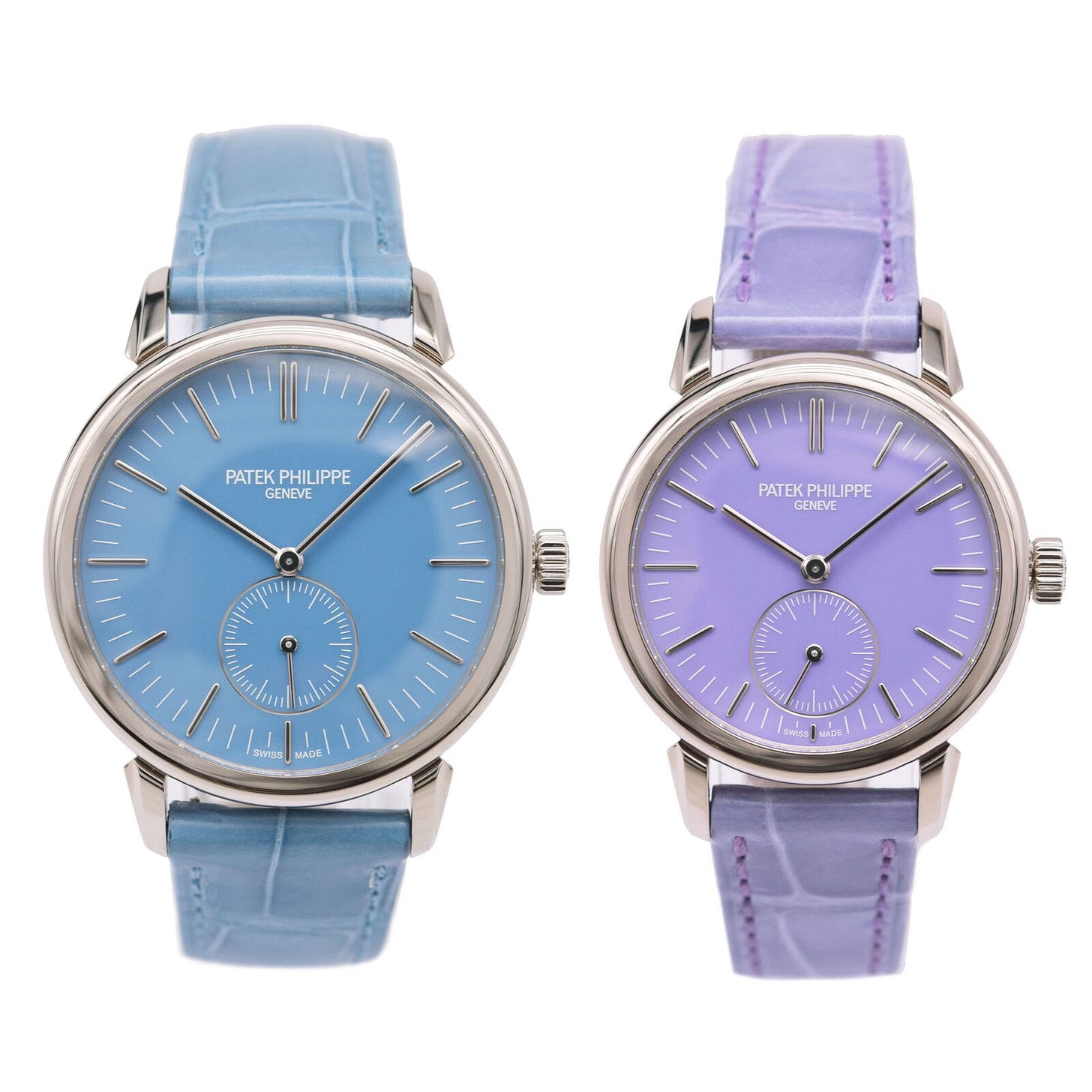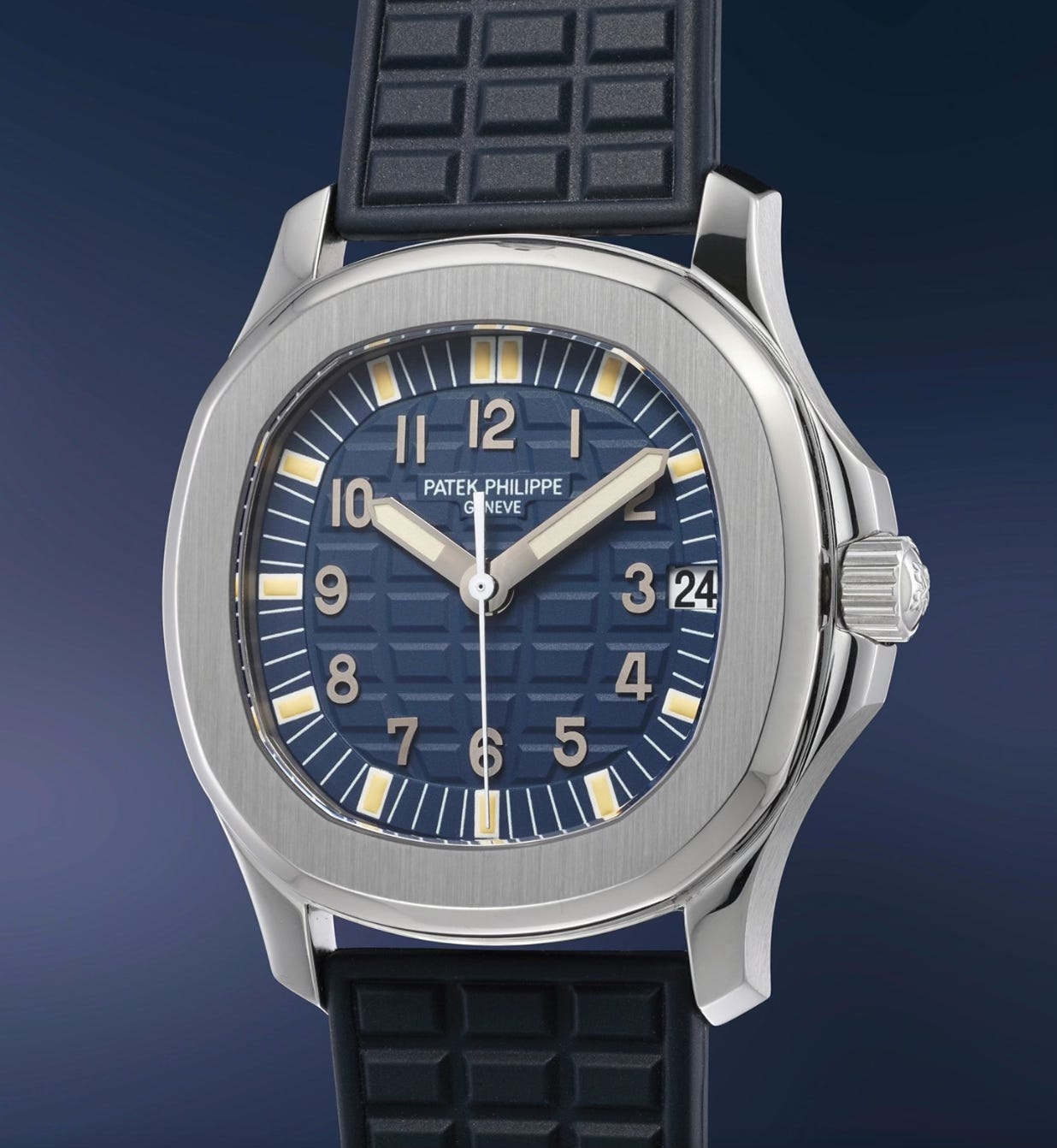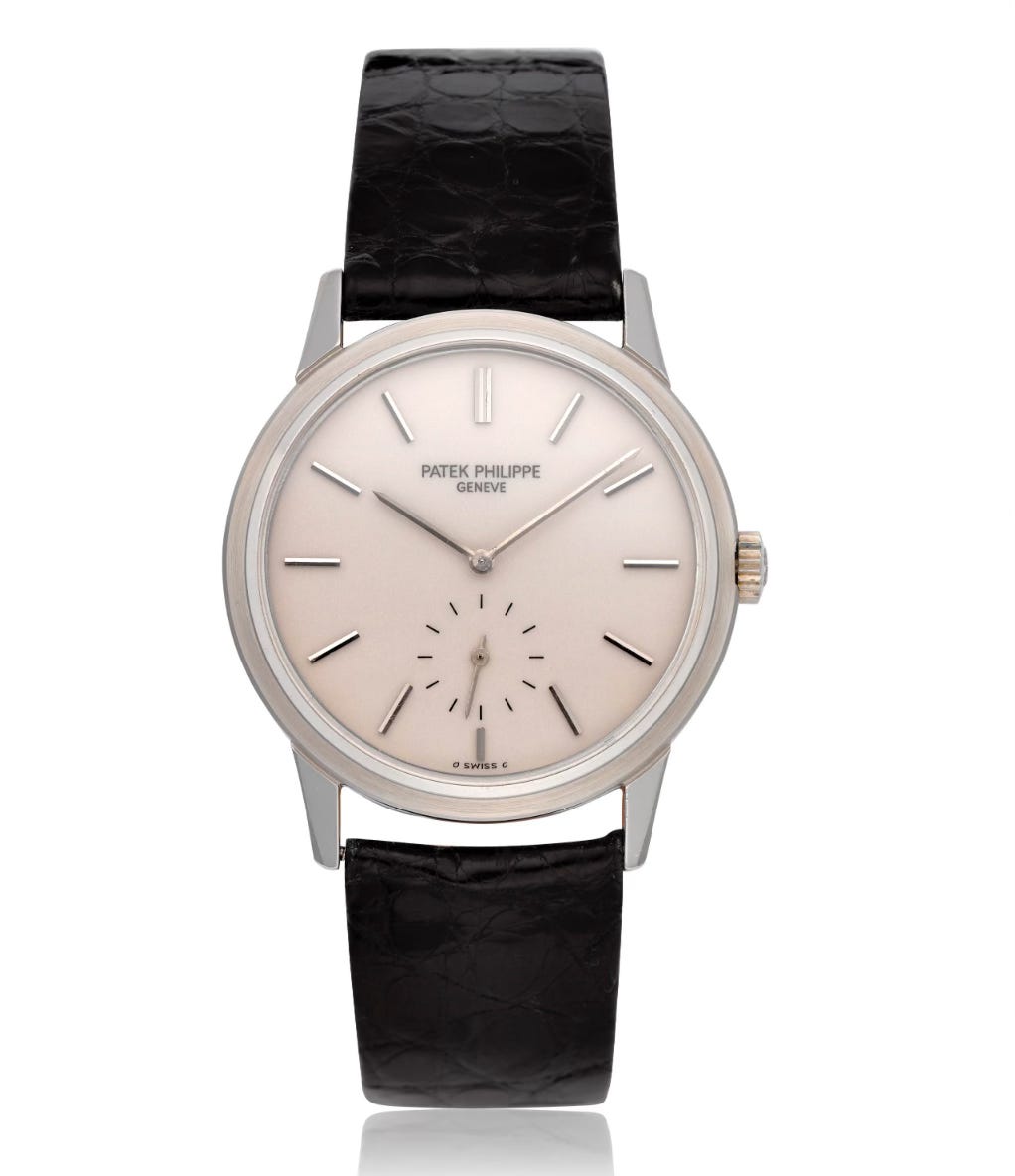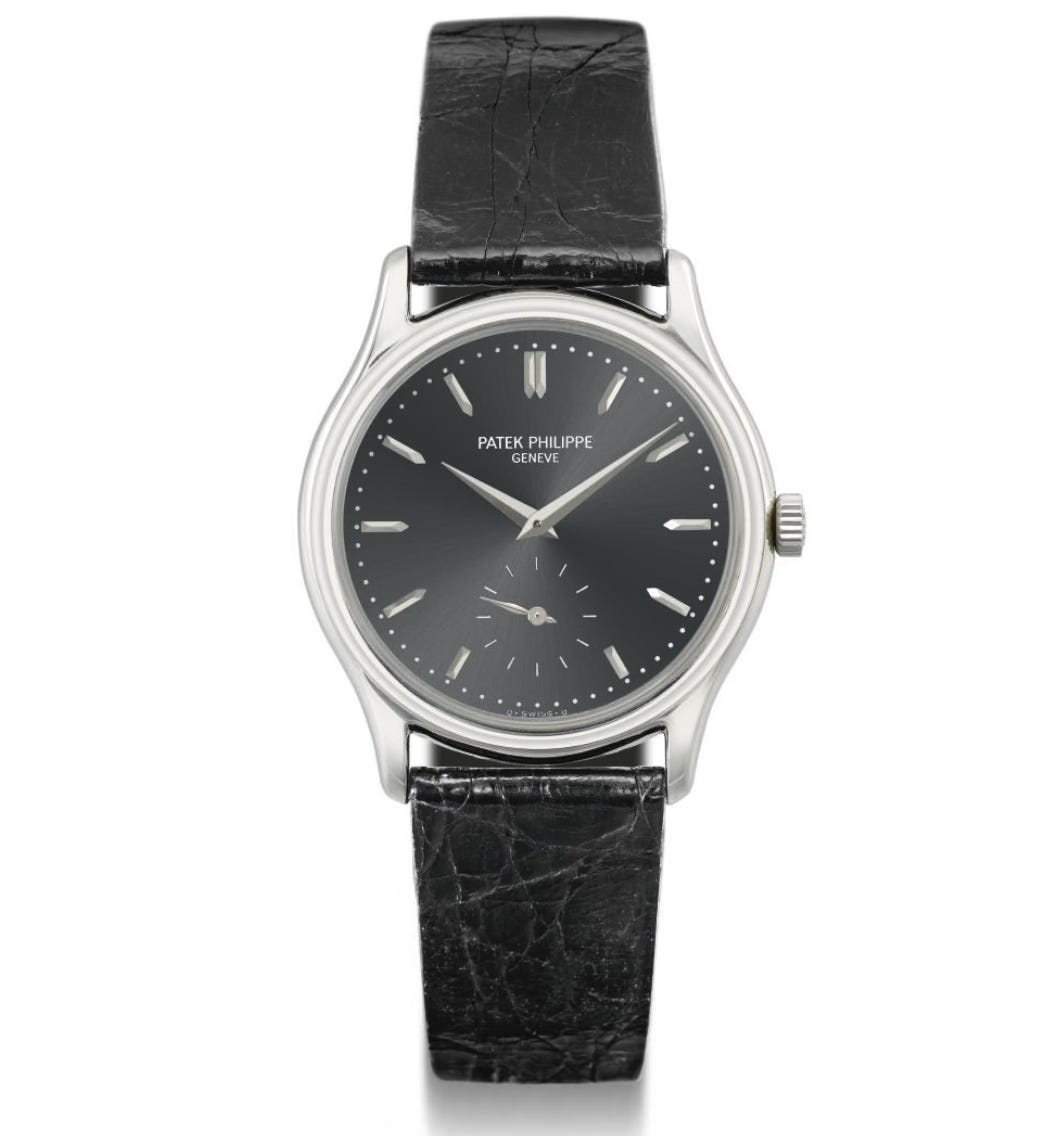A Very Brief Summary of the Post-War Japanese Economy and Japan Limited Edition Patek Philippe Watches, 1988-1999 and 2023
Daimon Ichizo, the president of Kinki Trading Company, began each working day in his office by looking out at Osaka castle. […] Once the fortress of the mightiest of combative feudal lords, the citadel called up visions of war in Daimon and fired the aggressiveness that sustained him in the world of business. […] A clock showed the exact hour of the world’s important time zones. Through gold-rimmed glasses Daimon glanced with satisfaction at the Audemars Piguet watch on his thick wrist. At that hour night covered the whole western hemisphere. But the other half of the world was astir, and his thoughts quickened as he imagined his three hundred agents carrying on Kinki’s business in all those foreign cities.
The passage is from the novel “The Barren Zone” (不毛地帯) by Toyoko Yamasaki (translated to English by James T. Araki).
The year is 1958. Only 13 years prior, much of the country lay in ruins. The Bombing of Tokyo left 100,000 dead, 1 million homeless and 50 square miles of the city burned, equivalent to the whole of San Francisco. Yet within a decade of the conclusion of the Great War, the occupational US forces were gone, the Japan-US alliance would begin, and the country set forth on a blistering path of economic recovery and expansion. And Japanese trading houses were at the forefront, competing with rivals both international and domestic to export the fruits of Japan’s revitalized industry and import the raw materials vital to its growth.
On that day in 1958, with the Audemars Piguet on his wrist, Daimon would meet Iki Tadashi. After graduating from the Army College with stints in the Kwantung Army in Manchuria, Iki had joined the Central Headquarters of the Imperial Army as an officer in 1941. A brilliant military strategist, he was a key figure in war planning and strategy on the South Eastern Pacific front. In July 1945, one month prior to Japan’s surrender, he was sent back to Manchuria to lead ceasefire negotiations with the Soviets, who had unilaterally abrogated on the Soviet–Japanese Neutrality Pact. Along with 700,000+ Japanese servicemen and civilians, he was taken prisoner and sentenced to 11 years of hard labor in Siberia, an egregious violation of both the Geneva convention and Potsdam Declaration. After his release and return to Japan, his wife urged him to meet Daimon for a job interview, despite lack of any business experience. He was 46 years old.
Incredibly, within 4 years, Iki would become vice-president, and later in the 1970’s, chairman of the company.
Daimon and Iki are characters based on real people and all of the above actually happened. Iki was based on Sejima Ryuzo, whose incredible late bloomer story deserves a long post of its own on a different Substack. Daimon’s character was loosely based on Kosuga Uichiro and Echigo Masakazu, both former CEOs of Itochu Corporation, one of the largest trading houses in Japan. I don’t know if they wore APs in real life and the author does not provide details, but I enjoy wondering what model it would have been. Perhaps a 18KYG Ref 5072 to match his gold rimmed glasses? Or maybe a platinum 5051PT VZSS, currently on sale from Wind Vintage?
The exchange rate in 1958 was 360 Japanese yen to US$1.00, so you had to be very wealthy to afford one at the time. In addition, a tax was levied on luxury items such as imported watches until 1989.
In 1953, Hotta Clock & Watch Co., became one of Audemars Piguet’s local agents in Japan, along with the Japanese subsidiary of Swiss trading house Desco von Schulthess AG (Nihon Desco). Due to export restrictions on precious metals and tax on imported luxury items, some AP’s (along with other brands such as Juvenia and IWC) were even assembled in Japan. Prior to the debut of the Royal Oak in 1972, the thin AP’s with VZSS movements were somewhat popular, but many were easily damaged by the humid Japanese climate. Japan was hence never really a large market for AP until the 1990’s; Patek Philippe would have much more success.
Thanks to strong leaders such as Sejima in both government and business, prosperity returned to Japan. Patek Philippe would begin exporting to Japan via their local agents Isshin Tokei Co. in 1957 and later Nichibo Trading Co., Ltd. Seiko would launch the first Grand Seiko in 1960 (see
). In 1971, Shellman Co., Ltd would be established, primarily as antique watch dealer and later agent for Philippe Dufour. The 1964 Olympics in Tokyo, the first in Asia, was a milestone and symbol of Japan’s recovery. After some tumultuous years in the late 1960’s, Japan’s economy entered the 1970’s with renewed strength, culminating in December 1989, when Japanese equities had a total market value of approximately US$4 trillion, almost 1.5x the value of all U.S equities and close to 45 percent of the world’s equity market capitalization. Rising disposable incomes and a deep appreciation for craftsmanship resulted in strong demand for many luxury items, including watches. Japan became a key export destination for the Swiss, making up approximately 9% of Swiss watch exports between the years 1990-2003. During this period, Japanese demand for antique and vintage Swiss watches was also very strong, with Rolex Bubblebacks and Patek Philippe 96’s particularly popular. Magazines featuring in-depth analysis and history of Swiss watches started to be published and widely read. It was also around those years that we would start to see Japan market limited editions from the Swiss brands. And of all Japan market limiteds, those produced by Patek Philippe were the most coveted. Below is a list of 5 of the most notable. Interestingly, 3 out of the 5 were produced prior to the bursting of the Japanese economic bubble in 1990, and 2 were produced as the Financial Crisis of 1997/1998 began to stabilize and demand returned. So they are in some way a symbolic representation of the strength, quality and resilience of the Japanese economy.(Audemars Piguet would produce many Japan limited edition watches from the year 2000 onwards, but that will be for another post.)
Patek Philippe Aquanaut Ref. 5066 Blue Dial (1999, Phillips). Click here for the ladies version, Ref 4960A, coming up for auction at Rago/Wright on Feb 7.
Patek Philippe Steel Calatrava Ref. 3796SG Rose Dial (1998, Collectability)
Patek Philippe Steel Calatrava Ref. 3718A (1988, Christies)
Patek Philippe Steel Calatrava Ref. 3923 (1987, Monaco Legend Group)
Patek Philippe Steel Calatrava Ref 3923 Black Dial (1986, Christies)
4 out of the 5 are Calatravas, indicating Japanese collectors’ preference for classic, elegant and understated models. Most are sub 33mm, with the Aquanaut the largest at 36mm. And apart from the 3923, all have unique dial colors. All are evidence of Japan’s deep appreciation for superior craftsmanship.
Unfortunately the Japanese economy would falter again along with the rest of the world in 2000-2001, but enter a period of steady recovery after bottoming out in 2002. In 2003, Patek Philippe would establish Patek Philippe Japan, their direct subsidiary to handle all distribution in the country. Audemars Piguet would also establish their own subsidiary followed by a boutique in the glamorous Ginza district in August 2007.
Sejima Ryuzo would pass away a month later in September 2007 at the age of 95. His death also marked the end of 69 months of steady economic expansion and portend several disasters. The Lehman bankruptcy in late 2008 was followed several years later by the tragic Great East Japan Earthquake and Fukushima Nuclear Power Plant meltdown in 2011. That same year, the Olympus scandal would highlight critical weaknesses in the stalwart Japanese multinationals.
During the post-Lehman economic malaise of the late aughts and early 2010’s, demand for new, pre-owned and vintage watches crashed. And having thus far been successful domestically, Japanese dealers were not accustomed to exporting internationally as they are now. Many dealers went out of business while others were forced to slash prices. Sensing bargains, over the next several years foreign dealers from all over the world made buying trips to Japan (including me). A floor manager of one of the largest pre-owned watch retailers in Tokyo told me once - “There was this European dealer that came by the other day. He told us that he wanted to buy the whole display case of Rolexes, Pateks and Omegas at the retail price”. It got to the point where American, Chinese and European dealers appeared almost daily at the stores like vultures sensing blood. This went on for years, and many of us lamented that most of the Japan limited edition Pateks had gone off to wed foreign collectors in far off lands. In fact, all 5 watches listed above were sold by foreign dealers and auction houses. Other asset classes such as real estate and jewelry were also targeted. The Japanese economy was in a state of paralysis, with a merry-go-round of prime ministers unable to chart a course of recovery.
It wasn’t until the mid-2010’s that Japan finally found its footing. Previously denounced and sidelined for a disastrous premiership in 2006, Abe Shinzo would return as prime minister in 2012 a new man. Under his 8-year leadership, economic reforms and institutional changes were implemented that would revitalize the economy. The Nikkei 225 Stock Index would more than double in value during his tenure, and the Olympics would return to Tokyo. Like Sejima, Abe was a late bloomer.
In the vintage and pre-owned watches sector, retailers and wholesalers adjusted their businesses for export. They streamlined sourcing and administration, and hired English and Chinese speaking staff to focus on exporting their inventory to healthier markets abroad. Today you will find Japanese wholesalers at every international tradeshow, their inventory meticulously priced and organized in plastic pouches stacked like baseball cards. You will also find most Japanese retailers’ inventory listed in online marketplaces such as Chrono24.com, the arbitrage opportunities of which are very limited when you factor in shipping and duties. Vintage and antique watch dealers such as Carese Co. would open elegant, high-end boutiques in Roppongi and Omotesando, catering to both domestic and a growing number of international collectors. Renowned dealer Seth Larrabure would establish Quark NYC in association with Quark Japan, the country’s largest pre-owned and vintage Rolex focused distributor. No longer was Japan the feeding ground of vulture dealers.
In 2023, after a year delay due to COVID, the Patek Philippe New Watch Art Grand Exhibition was held in Tokyo. The Genevan manufacturer would announce 6 Japan limited editions, including 2 Calatravas, the references 6127G-010 (mens) and 7127G-010 (ladies) below.

Although they share some characteristics of the late 1980’s/1990’s Japan limiteds, they exude a different aura. While the spider lugs are reminiscent of the Ref 1578 from the 1940’s and 50's, the Bauhaus hands and hour indexes are playfully modern. Perhaps they better represent the Tokyo of today, which is increasingly cosmopolitan (1 in 25 residents of Tokyo are foreign born), with strong female participation and contribution. The mizu-iro (sky blue) and fuji-iro (lilac) dials colors evoke hints of Kawaii/Anime culture, the modern origin of which can be traced to the Tōei Dōga studio in post-War 1956 and is now one of Japan’s most influential exports. Paired with conservative clothing, they would ooze iki. The other 4 limited editions all have sophisticated complications, including the Quadruple Complication Ref. 5308P-010, which perhaps represents the depth, robustness and maturity of Japanese industry’s engineering prowess.
Looking forward to 2024 and beyond, there are both serious challenges (see
and ) and bright spots (see ) for Japan’s economy. The great Peter Tasker summarizes his take here. For us in the watch world, we hope to see more Patek Philippe Japan limited editions, which continue to be symbols of both the country’s resilient economy and its appreciation of fine craftsmanship.








